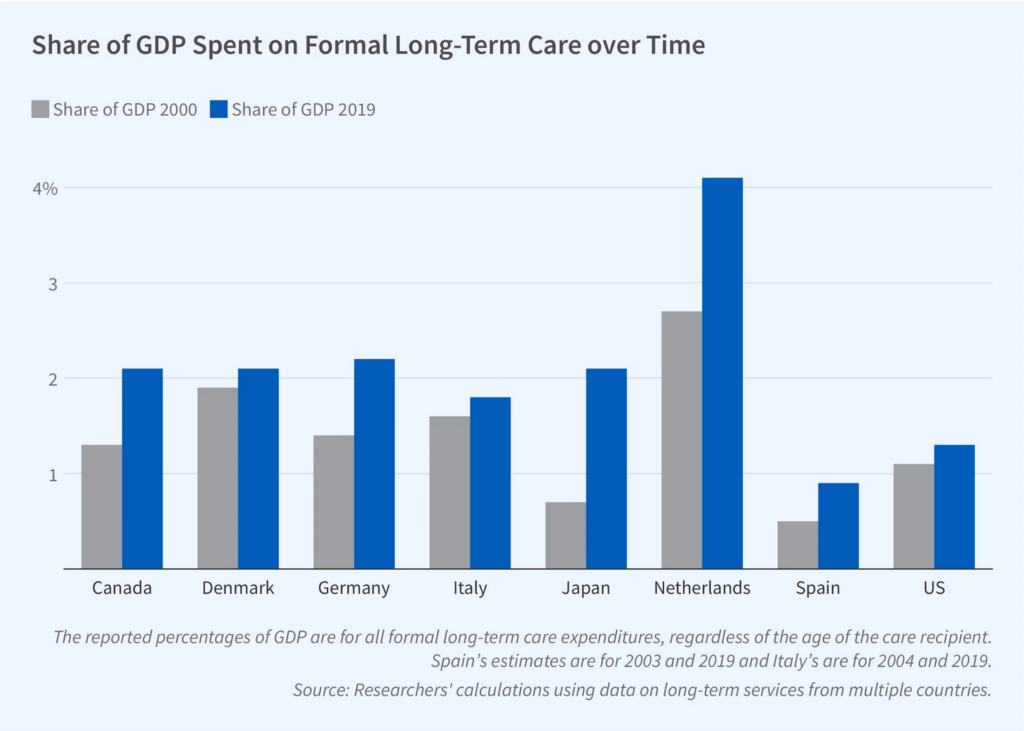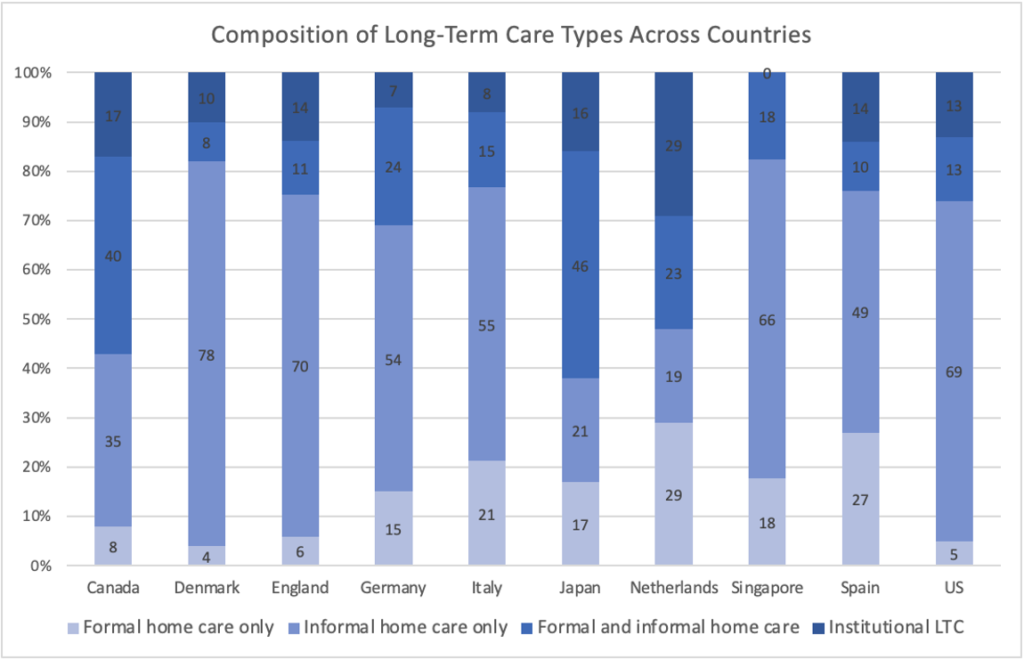A great paper by Gruber et al. 2023 looks at the evolution of long-term care for ten countries: Canada, Denmark, England, Germany, Italy, Japan, the Netherlands, Singapore, Spain and the United States. Long-term care is divided into three categories: institutional care, formal home care, and informal care. For the 10 countries examined, the paper finds that:
- National spending on LTC. Long-term care spending,comprises 2.1% of GDP on average, and has grown by 60% as a share of GDP from 2000 to 2019.
- Cost for patients. The cost of long-term care would be beyond the financial means of a large fraction of the elderly in each country. Because of this, the public sector bears most of the cost (e.g., ~2/3 of LTC cost in the US is covered by government)
- Spending on formal vs. informal care. Countries’ share of spending on home care (vs. institutional) varies from 23% in Spain to 63% in Japan
- Cost of informal care. Informal care comprises a substantial portion of total long-term care and the cost of this informal care, in terms of foregone wages and other costs, should be included in any measure of the true cost of long-term care
- LTC risk: Long-term care needs rises rapidly with age and with disability
- Formal vs. informal care: A minority of elderly receiving assistance rely solely on formal care (i.e. institutional care or paid home care) while the majority receive at least some informal care from family or other unpaid caregivers
- Worker gender. Women provide the vast majority of formal care in all these countries but there is a somewhat more equal distribution of care across genders in the provision of informal rather than formal care.
- Worker wages: Highly skilled formal caregivers in all countries are fairly well compensated, usually at or above the average economy-wide wage, but there is substantial variation across countries in the compensation of low-skilled caregivers, with wages ranging from less than one-half of the average wage in the United States to more than three-quarters of the average in Denmark and Japan
Results


Data
What data sets can be used to study long-term care needs? The Gruber et al. paper uses the following sources, all largely modelled on HRS. They are nationally representative longitudinal surveys of individuals starting at around age 50.
- US. Health and Retirement Study (HRS)
- Europe: The Survey of Health, Aging, and Retirement in Europe (SHARE)
- UK. English Longitudinal Study of Aging (ELSA),
- Japan. Japan Study of Aging and Retirement (JSTAR)